Chemists celebrate International Women's Day with life changing crystal research
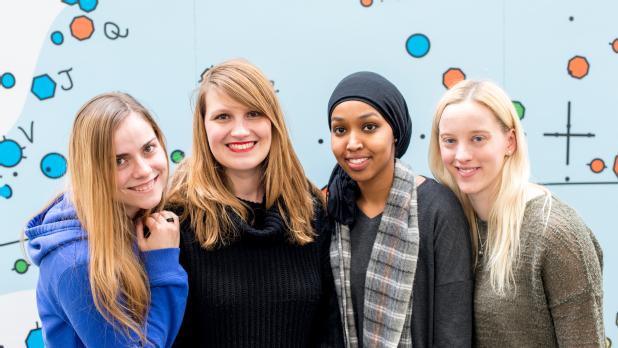 Researchers from the University of Warwick’s Chemistry department use their skills to analyse crystals with life changing applications. Their work helps to improve the composition of drugs, improve fungicides, enhance drug development and benefit industry.
Researchers from the University of Warwick’s Chemistry department use their skills to analyse crystals with life changing applications. Their work helps to improve the composition of drugs, improve fungicides, enhance drug development and benefit industry.
Emma Ravenhill, Faduma Maddar, Harriet Pearce and Maria Adobes-Vidal share a passion for chemistry and crystals. With International Women’s Day fast approaching on 8th March they want to share and celebrate the contributions women make to chemistry in today's world. They are part of the Electrochemistry Group at Warwick University, which is composed of 45% women, with the Head of the Department of Chemistry Professor Alison Rodger also being a woman.
Known on campus as ‘The Crystal Crew’ the chemists use state-of-the-art microscopes and instruments to assist their research into crystals. The images they produce, as well as contributing to the frontiers of research, reveal the innards of a strange and beautiful micro-world, hidden from ordinary sight. ‘The Crystal Crew’ have been working with an artist in residence on a project called ‘drawing on the nanoscale’ using high resolution probe microscopes to allow the chemists to express a different side to their creativity.
Artist in residence at the University of Warwick’s Chemistry department, Mary Courtney said, "It is not like the old days when women were excluded from the Chemistry world. If we were to look into the crystal ball we would see more women rising to top positions as the future for Chemistry".
Take a look through the microscope into the world of fascinating and beautiful crystals that are part of this hidden micro-world:
Maria Adobes Vidal, PhD Chemist at the University of Warwick,
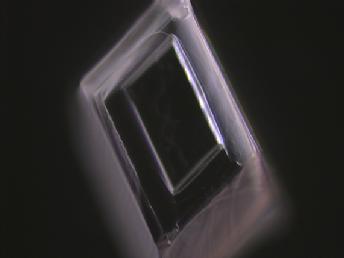 ‘I am particularly interested in active pharmaceutical ingredients (the active component in drugs) and pathological crystals (for example kidney stones) due to their importance for human health. Understanding the process of dissolution or growth of these crystals makes it possible to improve the composition of drugs for a better performance or develop new strategies or treatments to cure certain illnesses.'
‘I am particularly interested in active pharmaceutical ingredients (the active component in drugs) and pathological crystals (for example kidney stones) due to their importance for human health. Understanding the process of dissolution or growth of these crystals makes it possible to improve the composition of drugs for a better performance or develop new strategies or treatments to cure certain illnesses.'
Image: Paracetamol crystal
Harriet Pearce, PhD Chemist at the University of Warwick,
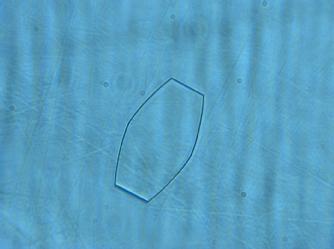 ‘The use of fungicides is vital for farmers to avoid crop losses. I want to understand the dissolution and growth processes of the fungicide crystals to make them more efficient to use.’
‘The use of fungicides is vital for farmers to avoid crop losses. I want to understand the dissolution and growth processes of the fungicide crystals to make them more efficient to use.’
Image: Bicalutamide crystal
Faduma Maddar, PhD Chemist at the University of Warwick,
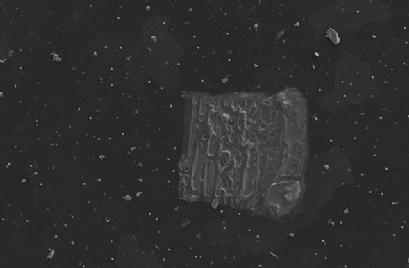 ‘I am looking into new approaches, combining optical imaging, microscopy and spectroscopy techniques to provide further in depth understanding and in turn assist in enhancement of drug development and formulation.’
‘I am looking into new approaches, combining optical imaging, microscopy and spectroscopy techniques to provide further in depth understanding and in turn assist in enhancement of drug development and formulation.’
Image: Nicotinamide adenine dinucleotide oxidation deposition surface
Emma Ravenhill, PhD Chemist at the University of Warwick,
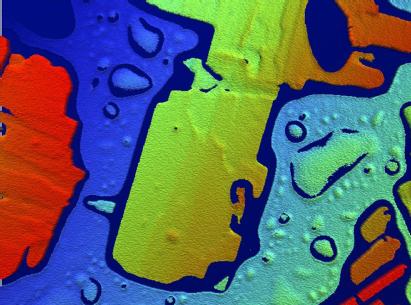 ‘All gasoline and diesel car engines contain a range of essential additive chemistries. These are required, for example, to inhibit corrosion, enhance lubrication, and keep the engine clean. My project involves using microscopy and analytical techniques to study the crystal growth processes behind this deposit formation, allowing us to tailor future additives to prevent these unfavourable reactions from taking place.’
‘All gasoline and diesel car engines contain a range of essential additive chemistries. These are required, for example, to inhibit corrosion, enhance lubrication, and keep the engine clean. My project involves using microscopy and analytical techniques to study the crystal growth processes behind this deposit formation, allowing us to tailor future additives to prevent these unfavourable reactions from taking place.’
Image: Calcium sulfate crystal interferometry
Notes to editors:
Maria, Harriet, Faduma and Emma (The Crystal Crew) are available for interview.
Faduma is from Coventry and attended Barr's Hill School and Community College, Coventry.
Harriet is a former teacher and taught mathematics at the Heart of England School in Balsall Common, Coventry.
Before becoming a chemist, Maria practiced dance for 10 years at the “Conservatorio professional de danza de Valencia” where she specialized in classic ballet and practised contemporary dance and Spanish traditional dances.
Emma paints in her spare time and is originally from Birmingham.
Mary Courtney from Coventry is the Chemistry Department artist in residence for the next 10 months, funded by a grant from the Leverhulme Trust. She is available for interview.
Alex Buxton
Communications Manager
Tel: 02476 150423
Mob: 07876 218166
a.buxton.1@warwick.ac.uk
